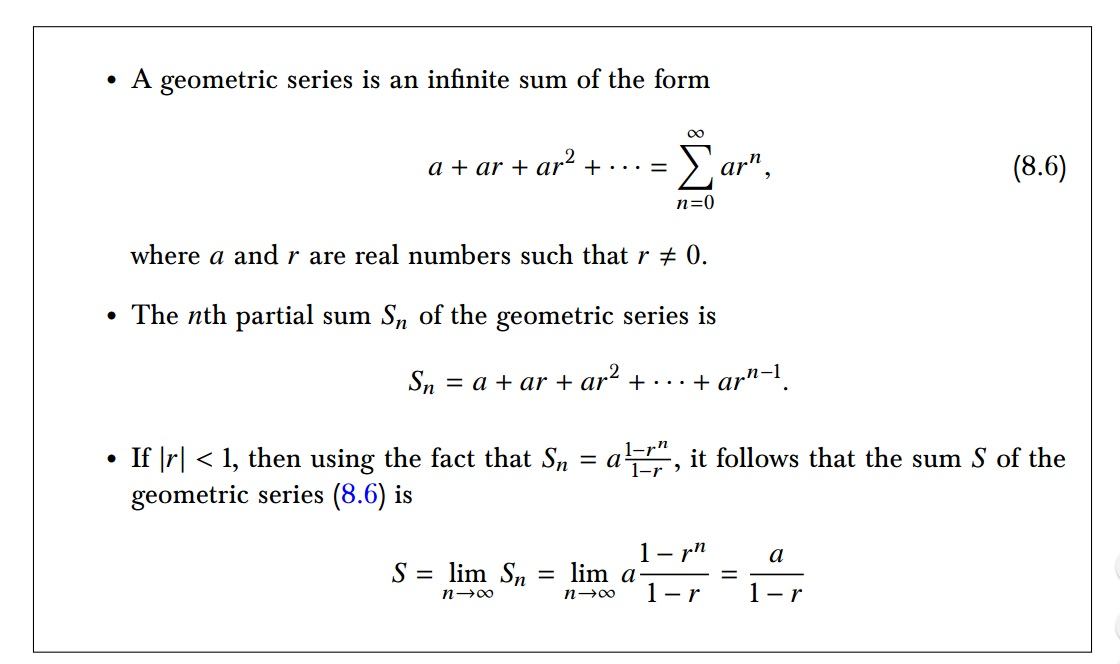

It is the only known record of a geometric progression from before the time of Babylonian mathematics. To prove the above theorem and hence develop an understanding the convergence of this infinite series, we will find an expression for the partial sum,, and.
#Sum of geometric sequence proof series#
We know that the nth-partial sum of the convergent series is. It has a simple formula: This formula is easy to prove: just multiply both sides by 1 -. Let us see if we can determine when the geometric series is convergent (and what it. It has been suggested to be Sumerian, from the city of Shuruppak. This is the finite geometric series because it has exactly n + 1 terms. The general form of a geometric sequence isĪ, a r, a r 2, a r 3, a r 4, … ,Ī clay tablet from the Early Dynastic Period in Mesopotamia, MS 3047, contains a geometric progression with base 3 and multiplier 1/2. So the common ratio is the number that we keep multiplying by. if x + 1 < 1, what is the sum of infinite geometric series This is my thinking: I have the formula S a 1 r n 1 r Now we know that the ratio is between negative one and one, meaning that as the series approaches infinitey the number will approach zero. So a geometric series, lets say it starts at 1, and then our common ratio is 1/2. The series is related to philosophical questions considered in antiquity, particularly. 1 Let's say I have the series: 1 + ( x + 1) + ( x + 1) 2. In summation notation, this may be expressed as. is an elementary example of a geometric series that converges absolutely.is a geometric sequence with common ratio 1/2.Įxamples of a geometric sequence are powers r k of a fixed non-zero number r, such as 2 k and 3 k. In mathematics, the infinite series 1 2 + 1 4 + 1 8 + 1 16 + ··


is a geometric progression with common ratio 3. + ar(n-1) (Each term is ark, where k starts at 0 and goes up to n-1) We can use this handy formula: a is the first term r is the 'common ratio' between terms nis the number of terms The formula is easy to use. In mathematics, a geometric progression, also known as a geometric sequence, is a sequence of non-zero numbers where each term after the first is found by multiplying the previous one by a fixed, non-zero number called the common ratio. The first block is a unit block and the dashed line represents the infinite sum of the sequence, a number that it will forever approach but never touch: 2, 3/2, and 4/3 respectively. Diagram illustrating three basic geometric sequences of the pattern 1( r n−1) up to 6 iterations deep.


 0 kommentar(er)
0 kommentar(er)
